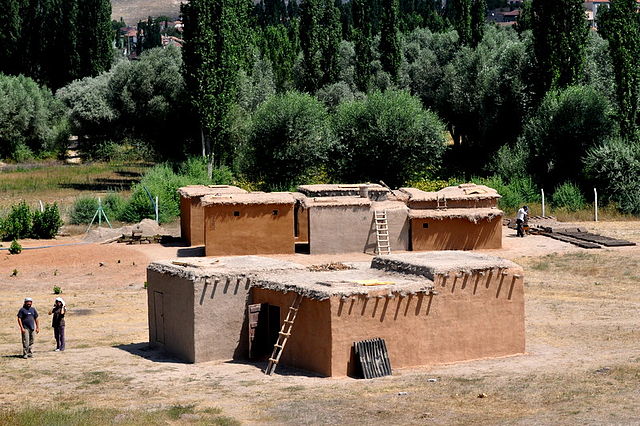The Neolithic Revolution, also known as the First Agricultural Revolution, was the wide-scale transition of many human cultures during the Neolithic period in Afro-Eurasia from a lifestyle of hunting and gathering to one of agriculture and settlement, making an increasingly large population possible. These settled communities permitted humans to observe and experiment with plants, learning how they grew and developed. This new knowledge led to the domestication of plants into crops.
Evolution of temperatures in the Post-Glacial period after the Last Glacial Maximum (LGM) according to Greenland ice cores. The birth of agriculture corresponds to the period of quickly rising temperature at the end of the cold spell of the Younger Dryas and the beginning of the long and warm period of the Holocene.
Associations of wild cereals and other wild grasses in Israel.
Composite sickles for cereal harvesting at 23,000-Years-Old
An "Orange slice" sickle blade element with inverse, discontinuous retouch on each side, not denticulated. Found in large quantities at Qaraoun II and often with Heavy Neolithic tools in the flint workshops of the Beqaa Valley in Lebanon. Suggested by James Mellaart to be older than the Pottery Neolithic of Byblos (around 8,400 cal. BP).
The Neolithic or New Stone Age is an archaeological period, the final division of the Stone Age in Europe, Asia and Africa. It saw the Neolithic Revolution, a wide-ranging set of developments that appear to have arisen independently in several parts of the world. This "Neolithic package" included the introduction of farming, domestication of animals, and change from a hunter-gatherer lifestyle to one of settlement. The term 'Neolithic' was coined by Sir John Lubbock in 1865 as a refinement of the three-age system.
Reconstruction of Pre-Pottery Neolithic B housing in Aşıklı Höyük, modern Turkey
Reconstruction of a Neolithic farmstead, Irish National Heritage Park. The Neolithic saw the invention of agriculture.
An array of Neolithic artifacts, including bracelets, axe heads, chisels, and polishing tools.
The Urfa Man c. 9000 BC. Şanlıurfa Archaeology and Mosaic Museum.








